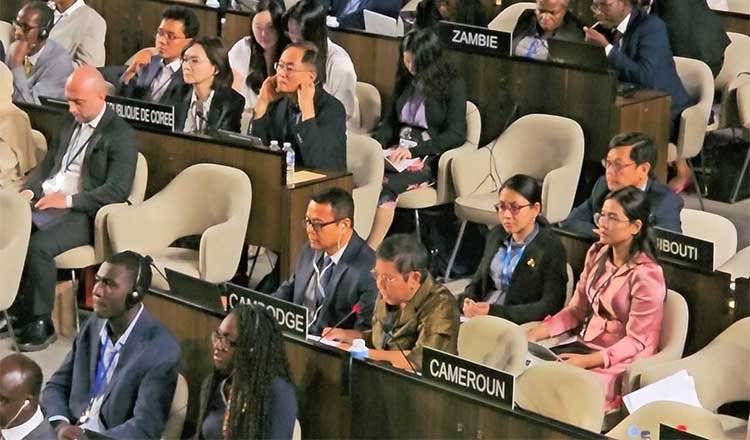Angkor Wat Replica in Thailand: A Grave Threat to Cambodian Heritage?
Cambodia has voiced profound concerns regarding a massive replica of Angkor Wat currently under construction in Buriram, Thailand. This isn’t simply a matter of architectural imitation; it’s a deeply felt issue impacting cultural identity and international heritage laws.
A Violation of Cultural Integrity and International Norms
The Cambodian Minister of Culture and Fine Arts, Dr. Phoeurng Sackona, publicly addressed this contentious project at the 47th Session of UNESCO’s World Heritage Committee in Paris on July 10, 2025. Her impassioned plea highlighted the complete lack of consultation with Cambodia prior to the commencement of construction. This, she argued, represents a blatant disregard for fundamental ethical principles concerning Cambodian cultural heritage.
UNESCO’s Role Under Scrutiny
Dr. Sackona’s statement emphasized that the unauthorized replication seriously jeopardizes the authenticity and Outstanding Universal Value of Angkor Wat, a site inscribed on UNESCO’s World Heritage List since 1992. She directly appealed to UNESCO and its advisory bodies to thoroughly investigate this matter and take appropriate action. This isn’t merely a diplomatic disagreement; it’s a challenge to the very principles UNESCO is founded upon – the protection of global heritage.
More Than Just Bricks and Mortar: A Symbol Under Siege
Angkor Wat is far more than just an ancient temple; it’s a potent symbol of Cambodian national identity, proudly featured on the nation’s flag. Its significance transcends mere architecture, resonating deeply within the Cambodian cultural fabric. The construction of a large-scale replica, therefore, is not just an aesthetic concern, but a direct assault on Cambodia’s cultural sovereignty.
A Precedent of Unease
The Cambodian government’s worries extend beyond the immediate impact on Angkor Wat. Dr. Sackona warned that allowing this project to proceed would set a dangerous precedent, potentially jeopardizing the protection of all World Heritage sites globally. This underscores the broader implications of this issue; if such actions are allowed to go unchallenged, the integrity of countless invaluable cultural landmarks is at risk.
A Call for Accountability
The issue was initially raised at the 40th Technical Session of the International Coordinating Committee for the Safeguarding and Development of the Historic Site of Angkor and Sambor Prei Kuk (ICC-Angkor/Sambor Prei Kuk) in Siem Reap on June 19-20, 2025. Dr. Sackona firmly stated that the replica’s construction not only violates ethical heritage conservation standards but also contravenes Thailand’s obligations under the 1972 World Heritage Convention. This is not just a matter of aesthetics; it’s a legal and ethical breach of international agreements.
Angkor Wat: A Timeless Masterpiece
Built in the 12th century by King Suryavarman II, Angkor Wat stands as the world’s largest religious monument. It is a testament to human ingenuity and spiritual devotion, and its ongoing preservation is critical to safeguarding a significant piece of global history. Its continued existence as a unique and authentic site is under threat.
The Cambodian government’s plea to UNESCO is a forceful call for accountability and a clear demonstration of the immense significance of protecting the world’s shared cultural heritage. The construction of this replica casts a long shadow over the future of heritage preservation. The international community must now decide how it will respond to this unprecedented challenge.
















![[VDO] What evidence does Thailand have to claim Tamoan Thom Temple as its own? 25 What evidence does Thailand have to claim Tamoan Thom Temple as its own](https://hothotnews.com/wp-content/uploads/2025/06/What-evidence-does-Thailand-have-to-claim-Tamoan-Thom-Temple-as-its-own-e1751463052220.jpg)

